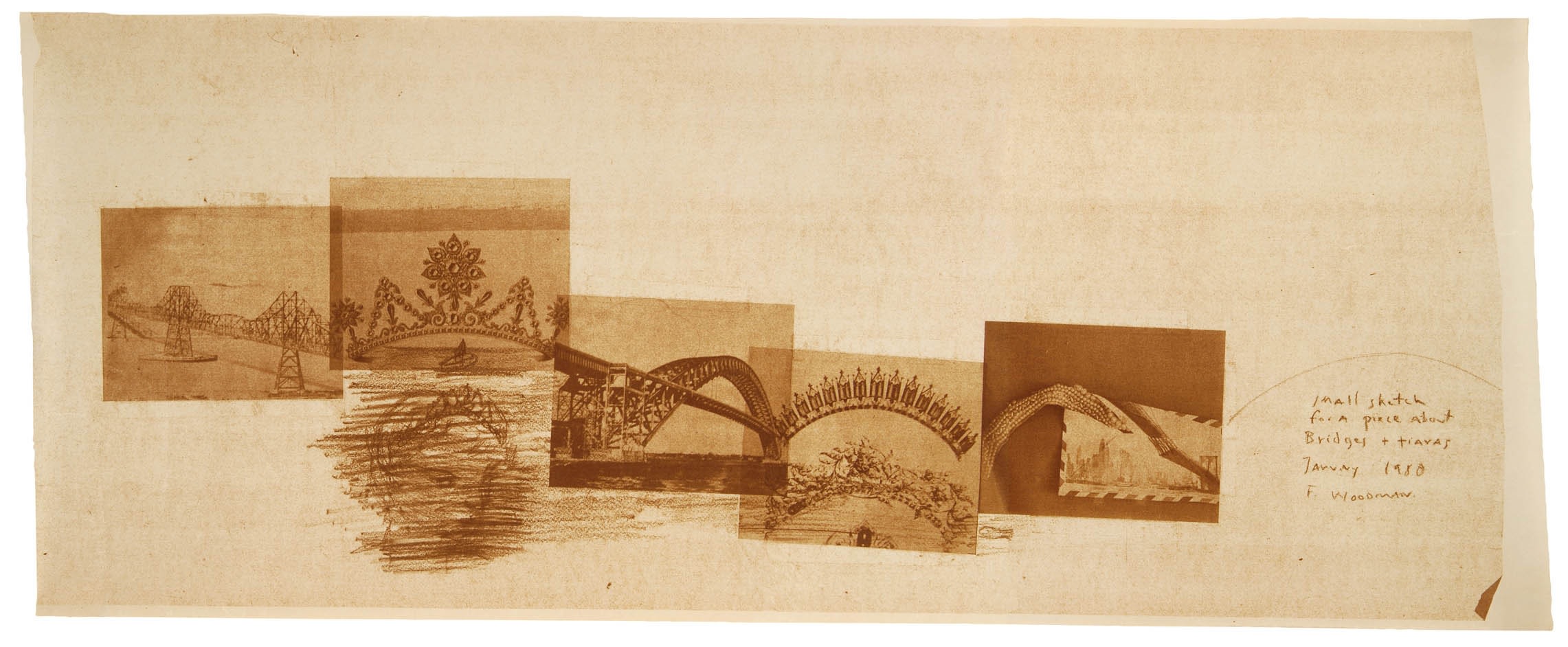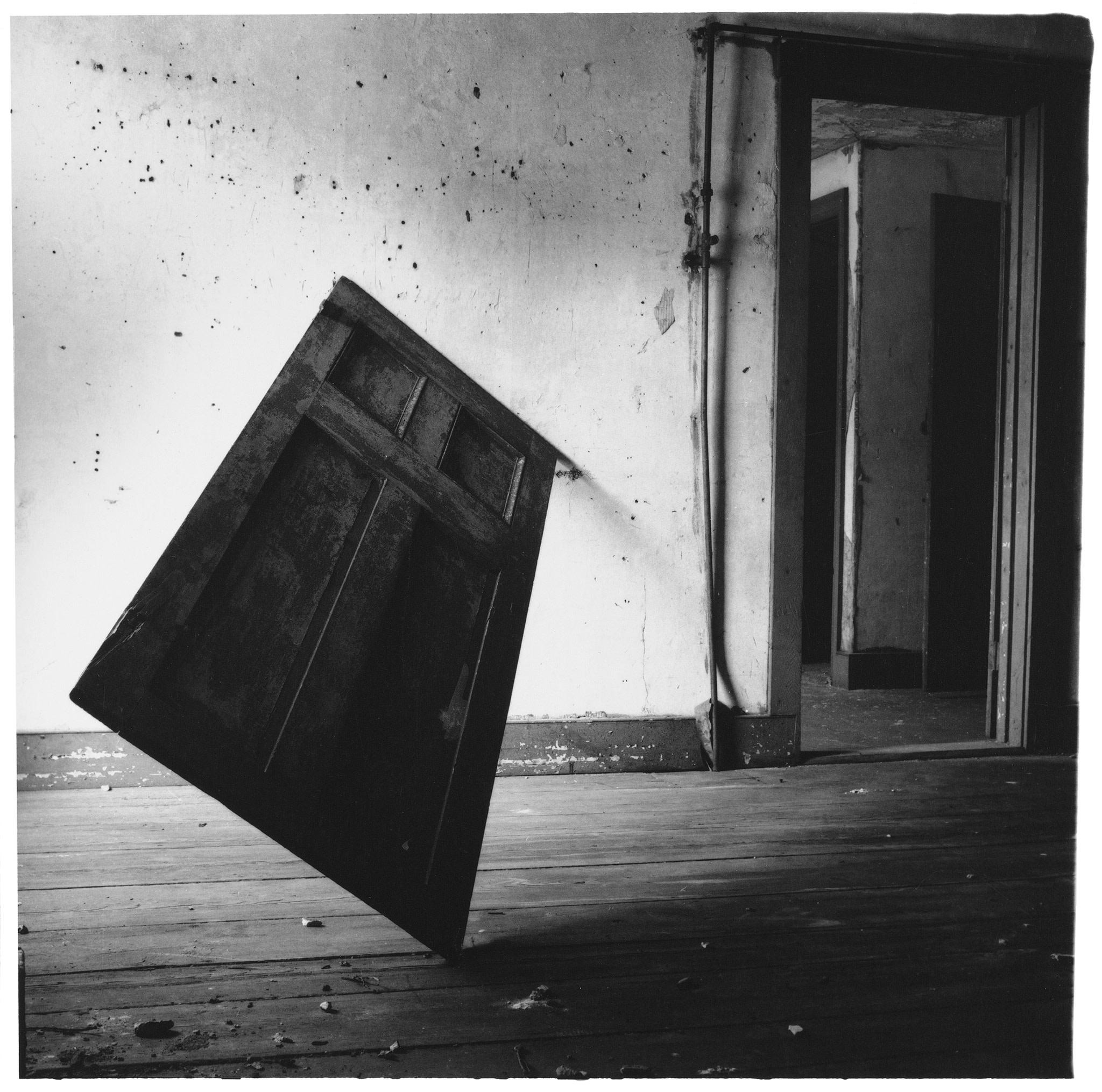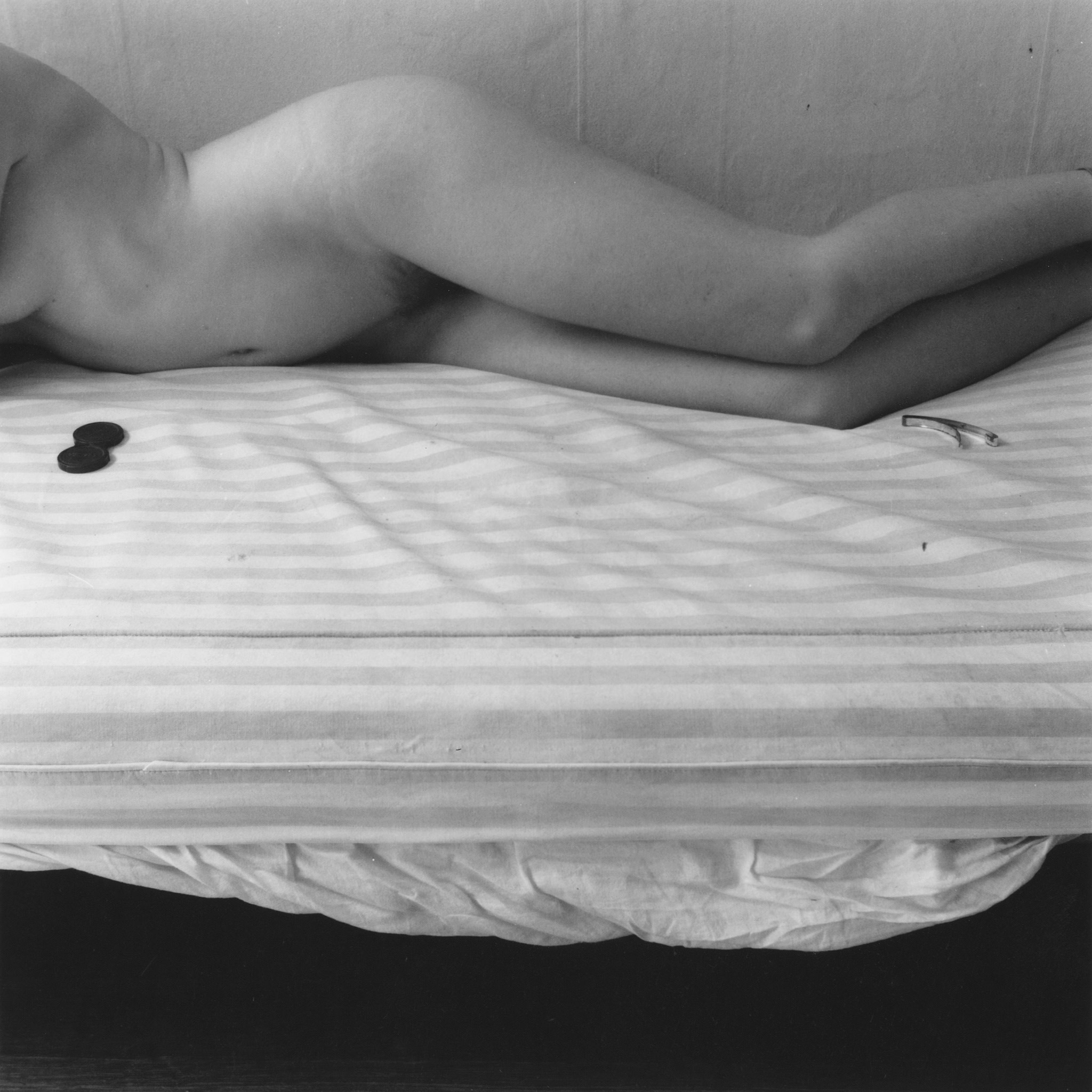The work of Francesca Woodman lies in the realm of still photography. Nevertheless, her images using the formal device of a zigzag are anything but still. They are restless pictures filled with motion. The viewer’s glance is never permitted to halt and is urged onwards to embrace sequences, consider episodes, submit to rhythms and confront changes of identities. These images are less tied to the logic of ‘presentation’, which is the core of still photography, and more the result of a choreography of images, an artful control of the irrepressible motion within them.

Growing up under Rocky Mountain skies, along with one brother, two cats and piano lessons, Francesca lived in a lively family milieu of artists, which at the time meant she also grew up with The Grid
Growing up under Rocky Mountain skies, along with one brother, two cats and piano lessons, Francesca lived in a lively family milieu of artists, which at the time meant she also grew up with The Grid. In the 1970s, modernist art – from Mondrian to Judd’s sculptures and Johns’ flags – was seen as formally based on the horizontal and vertical coordinates of The Grid. The critic Rosalind Krauss summed this up and criticized its weaknesses in a persuasive article published in October in summer 1979 entitled ‘Grids’. This is the moment when Francesca deliberately adopted the zigzag, though one can see her attraction to it in many earlier photographs. She may not have read Krauss, but she was gifted with a precocious grasp of the historical moment in which she was an artist. How did this happen?

The zigzag in some instances is emphatically present as the primary motif, while in others it hovers as a possibility. Francesca not only liked its look, she also liked the word.
These works show a freedom of structure that is a departure from the compositional strategies of her earlier photography. The zigzag in some instances is emphatically present as the primary motif, while in others it hovers as a possibility. Francesca not only liked its look, she also liked the word. She was liberated by words and their allure. As a reader and occasional imitator of Gertrude Stein, ‘zigzag’ came easily to her lips.

We know that she visited friends in Venice, where she missed train connections and saw the paintings of Tintoretto.
Were there historical influences? Was she affected by Tintoretto, who rejected the renaissance perspective box for the liberation of the free diagonal? We know that she visited friends in Venice, where she missed train connections and saw the paintings of Tintoretto. Was she influenced by them? Art history can happen while a girl licks an ice cream cone. How fortunate for the rest of us!

An audacious next step was the Small Sketch for a Piece About Bridges and Tiaras, January 1980 (pictured, above). Here the zigzag is transformed into a chain of looping and arching forms sailing across the paper. The imagery links together the bridge, among the highest achievements of ‘masculine’ engineering, with the tiara, that accoutrement of ‘femininity’ which bridges the brow of a queen. Her proposal includes a drawing of a sculpture of a tiara-ed head and a collage depicting New York fantastically bridged and tiara-ed. The proposal is modest in its realization, astonishing in its wealth of imagination. – George Woodman

This essay was first published on the occasion of the exhibition Francesca Woodman: Zigzag, held at Victoria Miro Mayfair in 2014. The exhibition considered the zigzag and other abstract geometrical forms as recurring visual themes in Woodman’s work. Woodman’s practice is often discussed in terms of its surreal and symbolic imagery, but her work was grounded in a sophisticated understanding of form. Her photography exemplified strong compositional motifs, and the repetitive, regular shape of the zigzag, with its strong lines and angles, was a form she used in images of wide-ranging subjects.
George Woodman (1932–2017) was a painter, writer and photographer, and a teacher of painting and art criticism at the University of Colorado at Boulder until 1996. He was married in 1953 to the artist Betty Woodman (1930–2018). Their children, Charles and Francesca, were born in 1955 and 1958 respectively.

About Francesca Woodman
In her short career Francesca Woodman (1958–1981) produced an extraordinary body of work – over 800 photographs – acclaimed for its singularity of style and range of innovative techniques. From the beginning, her body was both the subject and object in her work. From her very first images the main characteristics at the core of Woodman's career are clearly visible – her focus on the relationship with her body as both the object of the gaze and the acting subject behind the camera.

Images from top:
Slideshow:
Small sketch for a piece about bridges and tiaras, New York (detail), 1980
Zig Zag Study, New York (detail), 1980
Essay:
Untitled, New York, 1979-1980
Untitled, MacDowell Colony, Peterborough, New Hampshire, 1980
Untitled, Rome, Italy, 1977-78
Small sketch for a piece about bridges and tiaras, New York, 1980
Zig Zag Study, New York, 1980
Untitled, Providence, Rhode Island, 1976
Untitled, New York, 1979-80
All works © Charles Woodman / Estate of Francesca Woodman / Artists Rights Society
Courtesy Charles Woodman and Victoria Miro